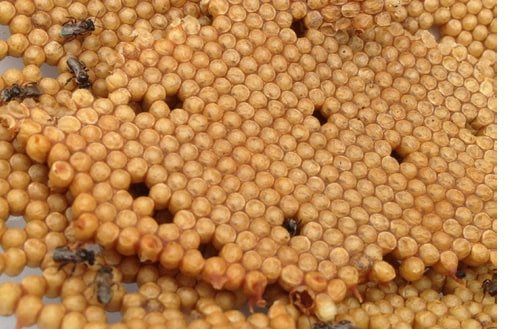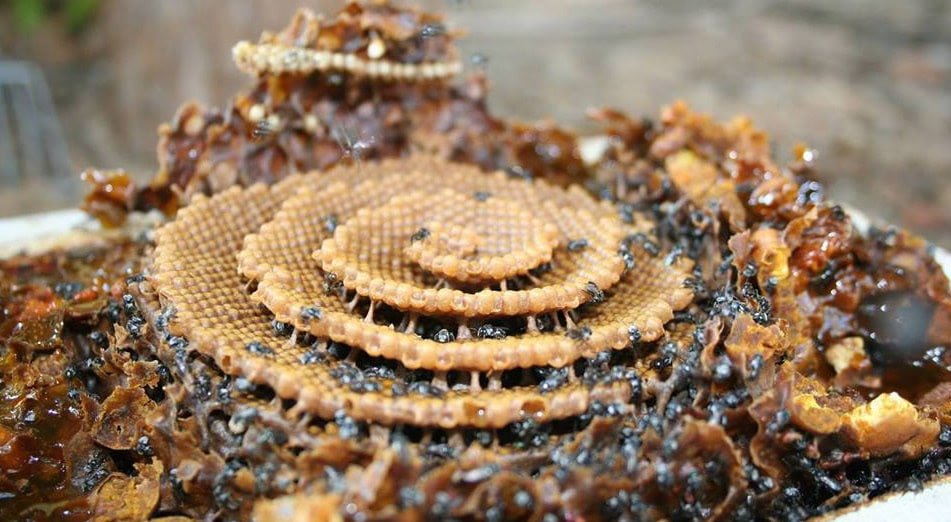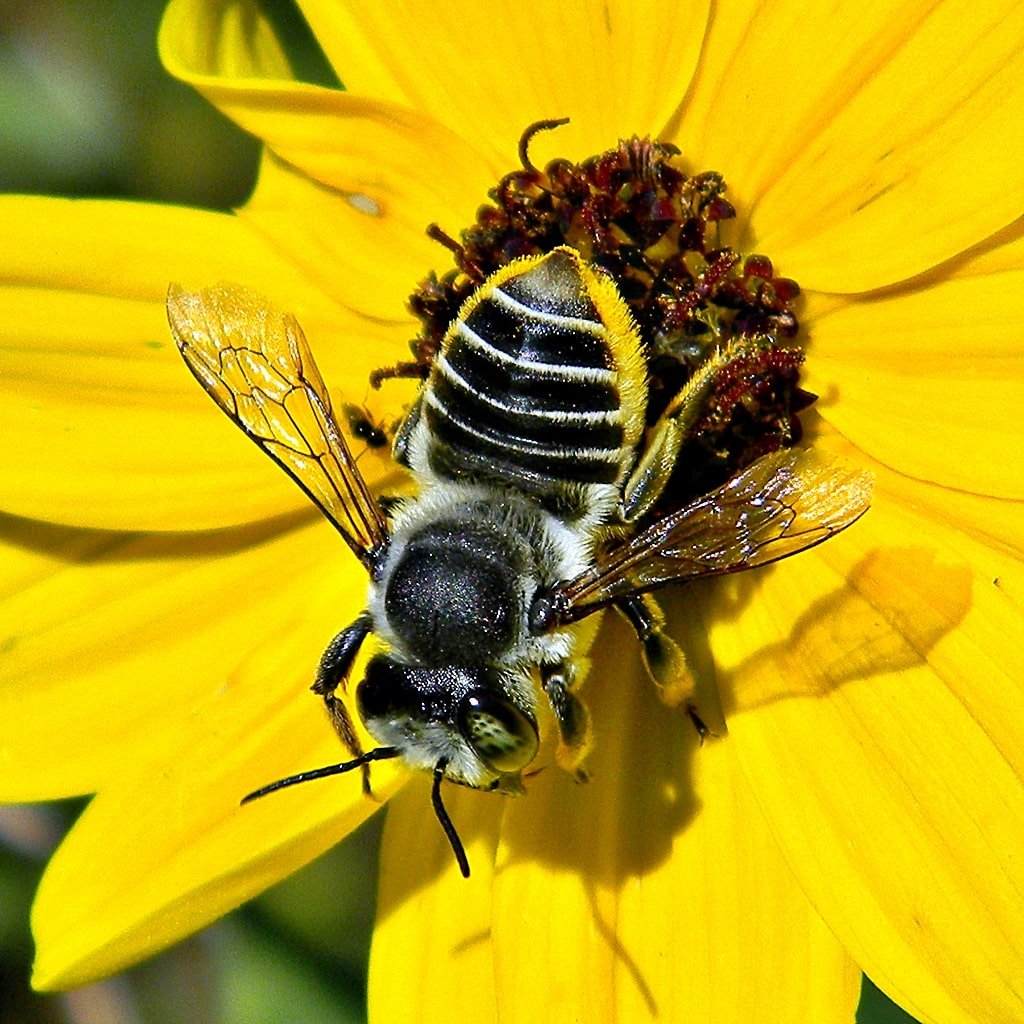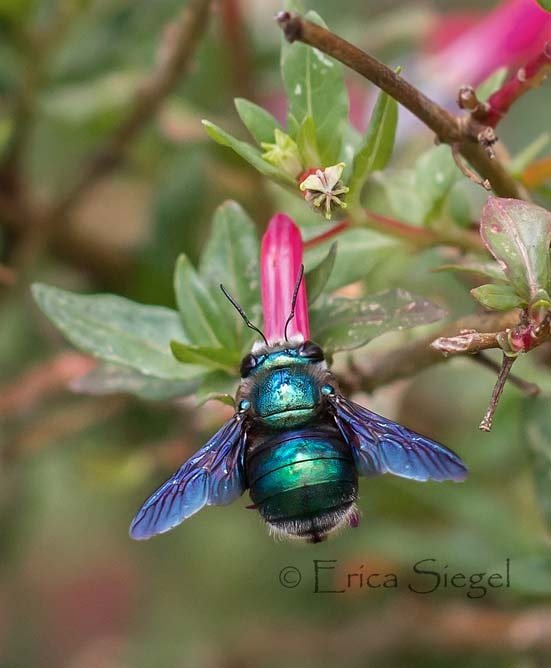Australia has over 1500 Native Bee Species. There are around 200 known species endemic to the Sydney region. Each native bee individually contributes to pollinating and maintaining indigenous biodiversity. The world’s bee populations are in trouble, through colony collapse disorder, predator beetles and a broad range of factors that relate to our lack of care for the Earth. Encouraging native bees into our gardens and community helps an integral part of our ecosystem.
“If bees were to disappear from the globe, humankind would only have four years left to live.”
Solitary and Social Bee
Bees are either social or solitary - only social bees have a queen, live as a colony and make honey. Sydney has only one native social bee, the stingless bee. All of Sydney’s other native bees are solitary bees, where just one female bee mates and then builds an individual nest for her eggs. Solitary bees can raise their young in burrows in the ground, hollow sticks, crevices or tiny holes in timber. The immature bee larvae remain sealed in their cells inside the nests throughout the winter. They develop into adult bees and emerge when the warm weather returns in spring. Blue banded bees, leafcutter bees, reed bees and carpenter bees are a few examples of native solitary bees
Do native bees sting?
Tetragonula Carbonari
Our social native bees are stingless bees and cannot harm you. All the other native solitary bees can sting, although most species are too small to deliver an effective sting and Australian native bees are not aggressive. If a larger native bee is picked up, trodden on or threatened it is capable of stinging. A native bee can sting more than once, and it is possible to be allergic to the sting, so please treat native bees with respect.
Do native bees make honey?
Australia’s ten species of social stingless native bees do make and store small amounts of aromatic honey. This honey has a delicious, tangier flavour than the commercial honey produced by European bees. Stingless bees are primitive species which make small amounts of stored honey in small resinous pots. In cooler areas, such as Sydney, they need most of their honey to get through the winter months. Furthermore, if even a small amount of honey is spilt in the nest, the bees can potentially drown.
Where special techniques are used in warm areas of Australia, honey production with stingless native bees is achieved. ‘Sugarbag’ honey is a rare product to be savoured because each hive only produces about 1 kg of delicious honey nectar per year. Commercial honey bees were introduced from Europe in about 1822, and are not native to Australia.
Aboriginals and the Sugarbag
In Aboriginal Australian mythology, bees are connected with travel and are often associated with migration from one region to another. Sugarbag not only refers to thick, dark, liquid honey, it is an all-encompassing term, incorporating everything related to stingless bees. Sugarbag honey is highly prized food amongst Aboriginals, who gather it from wild nests and often used it as a gift for peace and fertility. Wax produced by the sugarbag bee is used as a sealant for tools and wounds. Aboriginal Australians appreciate the significance of stingless bees, as the keystone species for pollinating and for the bees’ interconnections with the land and the surrounding environment
How to attract native bees to my garden?
Urban development and landscaping can destroy food sources and existing nest sites and habitats, threatening native bees. Our bees are a precious resource for the future pollination of our bushland and crops. You can help by planting nectar-rich flowers and providing new nest sites in your garden. You can also protect the bees by not using pesticides or insecticides which are deadly to bees and our precious ecosystem.
Great plants for attracting native bees include: Abelia grandiflora, Angophora, Baeckea, Buddleja davidii, Callistemon, Eucalyptus, Grevillea hybrids, Hardenbergia violacea, Lavandula, Leptospermum, Melaleuca and Westringia. A bundle of bamboo canes, dried mud bricks or a block of hardwood drilled with holes (4 to 9 mm wide and 150 mm deep) can also provide valuable nest sites for your local solitary bees.
Crop Pollination of Native Bee
Australian farmers have relied heavily on the introduced commercial honey bee, Apis mellifera, to pollinate their crops. However, our species of native bees may be better pollinators for some crops, due to their sizes and unique pollinating techniques. Our native blue banded bees, teddy bear bees and carpenter bees can perform a special type resonant vibration called buzz pollination. These bees are able to grab onto the flower and move their flight muscles rapidly, causing the flower and anthers to vibrate, dislodging pollen. This makes them ideal pollinators of crops such as tomatoes, kiwi fruit, eggplants, blueberries, cranberries, passionfruit and chilli peppers. Stingless bees are proven successful commercial pollinators of mangos, macadamias, watermelons and can also produce impressive results with strawberries, citrus fruit and avocados
Species of native bees
Inside a Tetragonula Carbonaria spiral hive
The Stingless Bee - Tetragonula Carbonaria
This tiny stingless bee (3 - 5 mm) is the only native species, in Sydney, that lives in a social colony and makes honey. The queen bee lays all the eggs, and the thousands of sterile female worker bees and male drone bees work harmoniously in building, maintaining and sustaining the colony and its hive. The bees’ hive is usually nested inside hollow trees, branches and logs. The nest is constructed from cerumen, a dark brown mixture of wax (secreted by the workers) and resins (collected by the foragers from ‘bleeding’ trees). Pollen, nectar and honey are stored in clusters of small pots around the edges of the nest. In the centre, the queen lays the colony’s future eggs, in hexagonal cells within a horizontal spiralling brood comb. Native Bee enthusiasts have developed techniques for keeping these unique bees in specially constructed hive boxes. Colonies can then be propagated by splitting a single hive in two. This will help to conserve and re-establish colonies of stingless bees back into urbanised areas.
The blue-banded bee in flight with extended prosbosis
Erica Siegel
Wildlife Photography
www.ozbirds-wildlife.com
Blue Banded Bee – Amegilla Cingulata
These beautiful solitary bees (mostly 8-13 mm long), with glittering stripes of blue or whitish hair across their black abdomens, are often seen darting around the flowers of lavenders and abelias. Each female builds their nest in shallow burrows in the ground but they may also be encouraged to nest in mudbrick houses or soft motar. Blue banded bees are great pollinators of tomatoes
Leafcutter Bee (Megachile sp.) by Bob Peterson
Leafcutter Bees - Megachile
Gardeners often first discover these amazing 6 to 15 mm long bees when they notice rows of neat circular cuts on the edges of some leaves in their garden. Leafcutters use the disks of leaf as a nest building material. They particularly like the soft leaves of roses
Photo courtesy http://www.aussiebee.com.au, copyright Erica Siegel
Peacock Carpenter Bees - Xylocopa Bombylans
These big bees, 15 to 24 mm long are the largest native bees in Australia, and look spectacular with their metallic-green colouring. They are easy to locate by the loud, deep drone they emit flying between flowers. They are called carpenter bees because they cut nest burrows in soft timber such as the dead limbs of mango trees, dry dead flowering stalks of grass trees and soft wood like banksia. Carpenter bees can be great pollinators of passionfruit









